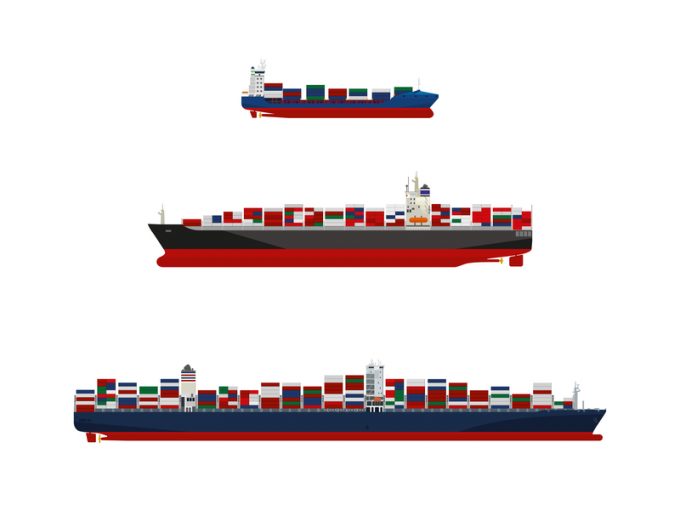Capture of MSC Aries will further drive up Indian export costs
With heightened geopolitical tensions sparked by the Iran-Israel faceoff, Indian exporters are again staring at ...

Container lines may have overshot in terms of calculating the optimum size of vessels as they sought economies of scale, according to a new Long Read from The Loadstar.
In advance of this month’s TOC Container Supply Chain event in Rotterdam, the decision of carriers to build vessels in the 18,000-22,000 teu ULCV class has one more been called into question, as new trends such as trade regionalisation and trade wars threaten volumes on the main east-west deep sea trades.
Lars Jensen, chief executive of SeaIntelligence Consulting, said the increased capacity of the vessels will continue to cause congestion issues at ports whilst simultaneously forcing carriers to reduce sailing frequencies.
““It’s a step too far and leads to a balance where you have too few weekly services and too many congestion issues at ports and hinterlands. However, the reality is there’s going to be about 150 of them, so of course carriers will use them.”
He claimed that if the carriers had stopped at the 14-15,000 teu range there would be more efficient networks and more frequent services with higher reliability.
“At that size these ships become very versatile, they can be used on all the deepsea trades, they can be used in the Panama Canal and, increasingly, at a lot of secondary ports,” he said.
At the same time there is an ongoing geographic volume shift, according to Drewy’s director of ports Neil Davidson: “The world economy is maturing and slowing, and the era of globalisation has run its course. We’re seeing a very significant change to more regionalisation, which is going to affect volumes on the long-haul routes but also provide opportunities on shorter, intra-region ones too.”
Container port growth was largely driven by throughput in China over the past 10 years, he said, but as the Chinese economy matures, so too has its port volumes, leaving the rising “ASEAN tigers” to pick up the slack. He says the biggest port opportunities now lie in Vietnam, Indonesia and Malaysia.
“This is where the intra-region growth side of the story plays in – it’s not just growing volumes for intercontinental, but ASEAN is playing a bigger part in the regionalisation and the huge intra-Asia trade,” he explains.
That doesn’t discount China’s role in shaping regional and world trade, of course. With 31m teu and 100 port pairs, intra-Asia accounts for roughly one-in-four boxes shipped worldwide every year. And much of the growth in South-east Asia is driven by trade with China and, to a lesser extent, Korea and Japan, with the ASEAN-Far East trade showing “remarkable growth”, according to Drewry.
Comment on this article
Gary Ferrulli
June 03, 2019 at 2:42 pmThe same criticisms were opined when US Lines built 4400 teus ships in the 80’s,
and then successively larger ships to meet market conditions in years to come.
Hindsight is always 20/20, or could be a blind spot in some peoples minds.
Martyn Benson
June 03, 2019 at 7:38 pmThis article talks about vessels of 18,000 TEUs being too large but we have already surpassed that with current vessels being in the 20,000+ range and COSCO saying they intend to build 25,000 TEU vessels. The ‘space race’ started by Maersk with the Triple-Es was intended to steal a march on the competition and provide hitherto unseen economies of scale.Instead the competitors were obliged to respond and the rates fell so the Triple-E gamble became a bridge too far for the container shipping industry and one which will have long-term ramifications for the shrinking number of carriers still big enough to command a global presence. In other words, we will be back to a volume game again to consolidate market share and remove competitors.
Enzo Esposito
June 04, 2019 at 11:19 amMax size ship should 14000 try suitableforthe newPanamacanal
E burning GAS
Theyshould run round the world service from far East to wcoasy thenpanama then exec or north Europe then med and more esdt then returning to far East
How much sea freight paying the goods from China to Europe
Is it worth to run efficiently with a non paying cargo ????
Owners should stop to compete for market share they have to compete for higher sea freight!!!!